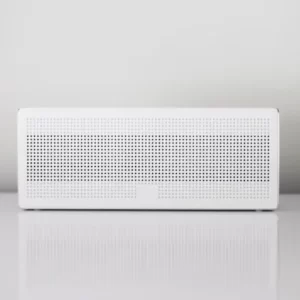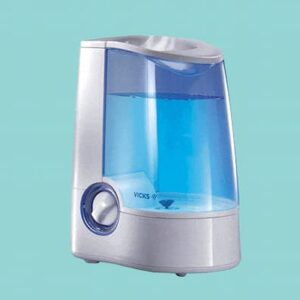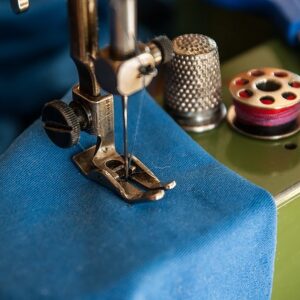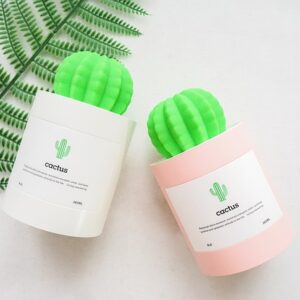Regularly oiling your sewing machine helps improve performance. How to oil the sewing machine? Also, it will operate more silently. For the majority of sewing machines, you must first remove the fabric lint and threads that gather with each project before adding a few drops of oil. You should only ever use sewing machine oil.
Table of Contents
Which Oil Ought I To Use?
Use only the original oil that BERNINA provided! It is a superior oil that is free of acid and resin and has the appropriate consistency.
I sincerely doubt any of you have ever attempted to utilize cooking oil. Don’t even consider it! Cooking oil solidifies into a thick, sticky mass, which causes more harm than good. Naturally, the hook would then be unable to function properly and smoothly.
Purchase a new bottle of oil from your BERNINA dealer if the oil that came with your sewing machine runs out. Do not purchase any machine oil online, please. Your machine will appreciate it.
General Rules For Oiling The Sewing Machine
- Never oil plastic components.
- If you unintentionally consume oil, visit an emergency room to get treated.
- Keep children away from the oil.
- Dispose of the oil in accordance with applicable laws.
- Use only premium sewing machine lubricant.
- Avoid making touch with your skin and eyes.
- Before beginning to lubricate your sewing machine, always make sure it is unplugged.If you spill the oil on your skin or get it in your eyes, immediately wash it off to avoid discomfort.
How To Oil The Sewing Machine?
Prepare To Oil The Sewing Machine
Follow the instruction manual. Every brand of sewing machine is different, so it’s best to check the manual of the sewing machine to learn how to clean and oil it. Make sure your sewing machine is oiled to keep the machine lubricated and running smoothly.
Some manufacturers recommend cleaning the machine every 10 hours of use. When you see lint beginning to gather, clean it. Some old machines are marked with red where oil should drop. Others will use pictures to guide you where to put it.
If you don’t have a manual, you should be able to find it on the manufacturer’s website. You can even download it. If this doesn’t work, call the manufacturer and ask for one. You are likely to be asked about the name, model, and serial number of the machine. You can also ask the local dealer.
Some machines do not need oiling. They are self-lubricating. Such a machine still needs maintenance, but if it says not to refuel it at home, then don’t.
Walk slowly. Make sure you don’t use too much oil. It’s a good idea to add some oil. Let’s see the effect. Then use more. When you work, put a newspaper under the machine.
Grease a small area at a time. You should take apart the small parts of this machine and oil them. First, learn the instructions and drawings to understand the functions and names of various components.
Do not grease the needle, spool, presser foot, or board, otherwise, the fabric will be soiled.
Disassemble the components according to the instructions in the instructions. You need to follow this process to clean it, brush it off, and then lubricate every part.
After you finish each part of the sewing machine, you will want to reassemble it, and then continue to the next part. Change needles frequently. You may want to do this for every new project.
Prepare to clean the machine. You should clean the machine before oiling it. First, turn off the machine and unplug it.
Remove all excess parts on the machine that will prevent thorough cleaning. For example, remove threads, bobbin shells, plates, and pressers.
Remove the needle plate. If your machine has a bobbin hook, you should take it down, because there may be thread ends collected. For safety, please remove the needle of the machine.

Cleaning The Sewing Machine
Take a small, hard Lint Brush. You should be able to brush the fluff off with a stiff brush. Brush the fluff off as much as you can. Sometimes these small brushes and other cleaning materials come with the sewing machine.
If you want to find the cotton wadding that is too tight to remove, you can try to remove them with tweezers. It is necessary to thoroughly clean the machine before oiling it.
Try wiping any lint or residue from the bobbin hook with a soft cloth. Some people also use clean eye black brushes or pipe cleaners.
Use compressed air. You can clean the parts of the machine with a can of compressed air. Nevertheless, there are some necessary precautions when using compressed air.
The problem with canned air is that it blows the lint deeper. To reduce this problem, keep the nozzle at least 4 inches (10.2 cm) away from the machine part and spray it at a certain angle to the machine, so that it will blow the cotton wool out of the machine rather than into the machine.
Clean the shell area and the shell itself with air. This is where the package is loaded. Scattered dust should fall off. Clean the bobbin shell with air.
Clean the needle plate. You have to screw the needle board off. Delete the board. You will see dust inside. Spray the area with compressed air. Clean other parts according to the instructions of the sewing machine.
Oil The Sewing Machine
Buy Sewing oil. You can’t use car oil. You need to buy oil for sewing machines. The sewing oil is transparent and is packed in a small bottle.
When you buy a sewing machine from a dealer or store, it may come with a bottle of oil.
You can find this oil in sewing and cloth stores. This cannot be said too much. You cannot use any other oils except those recommended in the user manual.
Household oil or WD-40 does not work. The consistency of sewing oil is different from that of automobile oil. It is transparent and lighter.
Drip oil into the parts of the sewing machine. You only need a small amount of oil. Your user manual will tell you where to put it on the machine. Just a few drops.
Generally speaking, you will be told to squeeze a few drops of oil on the shell of the bobbin shell.
Most machines want you to oil the hook (a hook is something that rotates in the shuttle tube). People often tell you to drop oil into the hook and loop of the sewing machine and the casing. That’s the silver ring on the scroll hook. If you drop oil here, your machine will perform better and quieter, because the two pieces rub together.
You can also drop a drop of oil on the outer ring of the bobbin hook according to the instructions. This is where it slides in the hook competition.
Wipe off the excess oil. Try to avoid any oil in your sewing machine parts that will come into contact with the fabric. However, if you see oil on the presser foot or pressure plate, or on the needle or spool, please wipe it off with a cloth. Otherwise, oil may remain on your fabric and thread.
If you use too much oil, you can let a fine cloth pass through the machine and then wipe the outside of the machine. Use a wet soap towel. Let it sit down. Then the oil will gather. Then, do it again. In the next few days, you may need to do this several times until all the excess oil is not in the machine.
Testing machine. Before you start sewing a new project, sew a few stitches on a piece of cloth you don’t care about. You need to see if there is any extra oil. Turn the needle board back into the sewing machine.
How Often to Oil My Sewing Machine?
The type of stitching you do, how long you’ve been sewing, whether you embroider, and how often you use your machine all play a part in this. It’s critical to frequently oil your equipment rather than waiting until it asks you to. You’ve probably noticed that your machine occasionally makes a “odd” sound. It simply stopped purring as sweetly. This indicates that it’s time for some upkeep!
This is something you may do both before and after a project. You can also oil your machine while working on a project that will take a lengthy time.
Conclusion
If you want to oil your sewing machine, which depends on how frequently you use it and the kinds of fabrics you stitch. You will need to clean your machine considerably more frequently if you sew relatively frequently and use fabrics like velvet that “shed.” You just need to clean your sewing machine once every few months if you use it lightly to moderately. The general guideline is that it’s time for a refresh if you hear squeaking or clinging and observe buildup.
Read about





